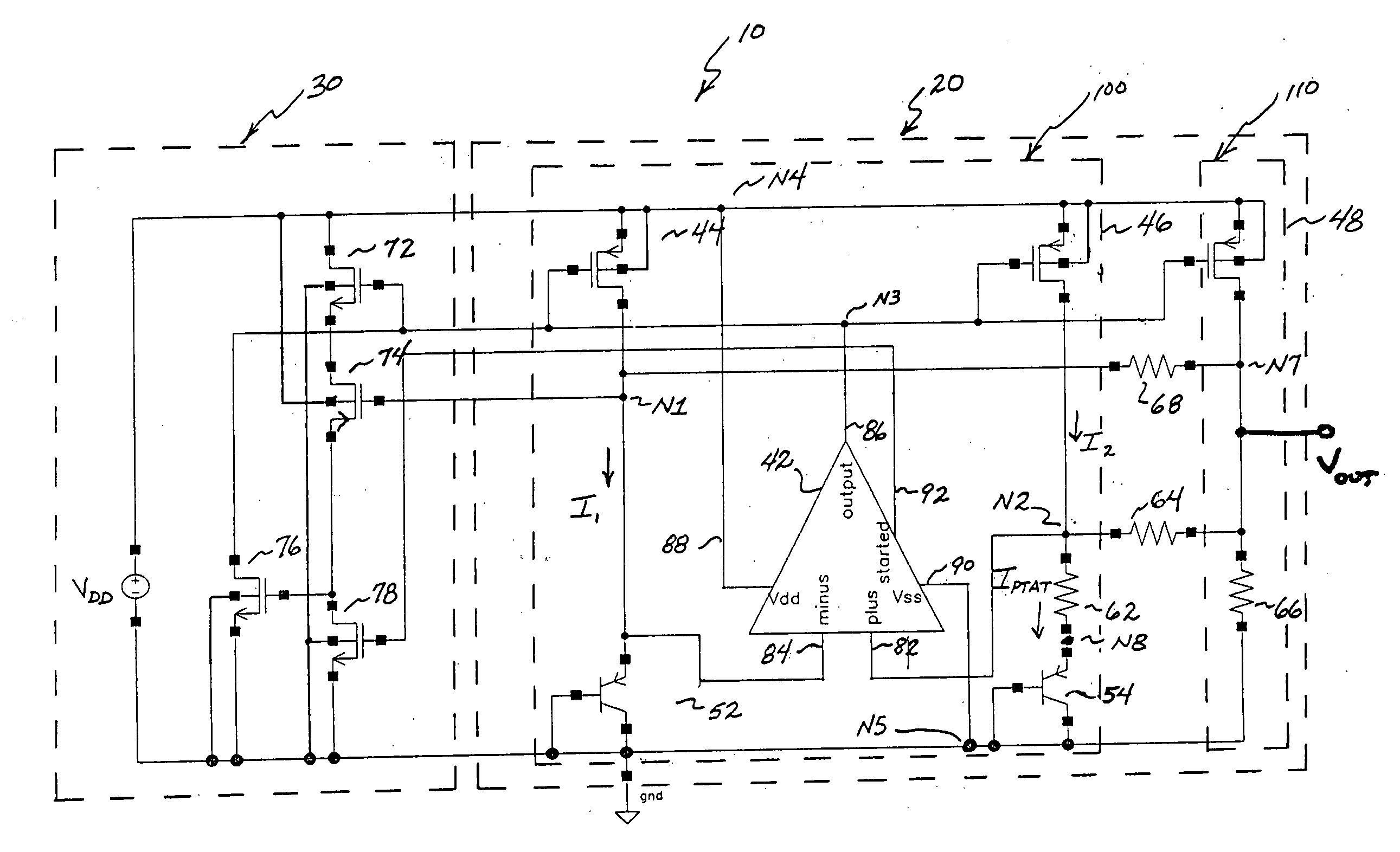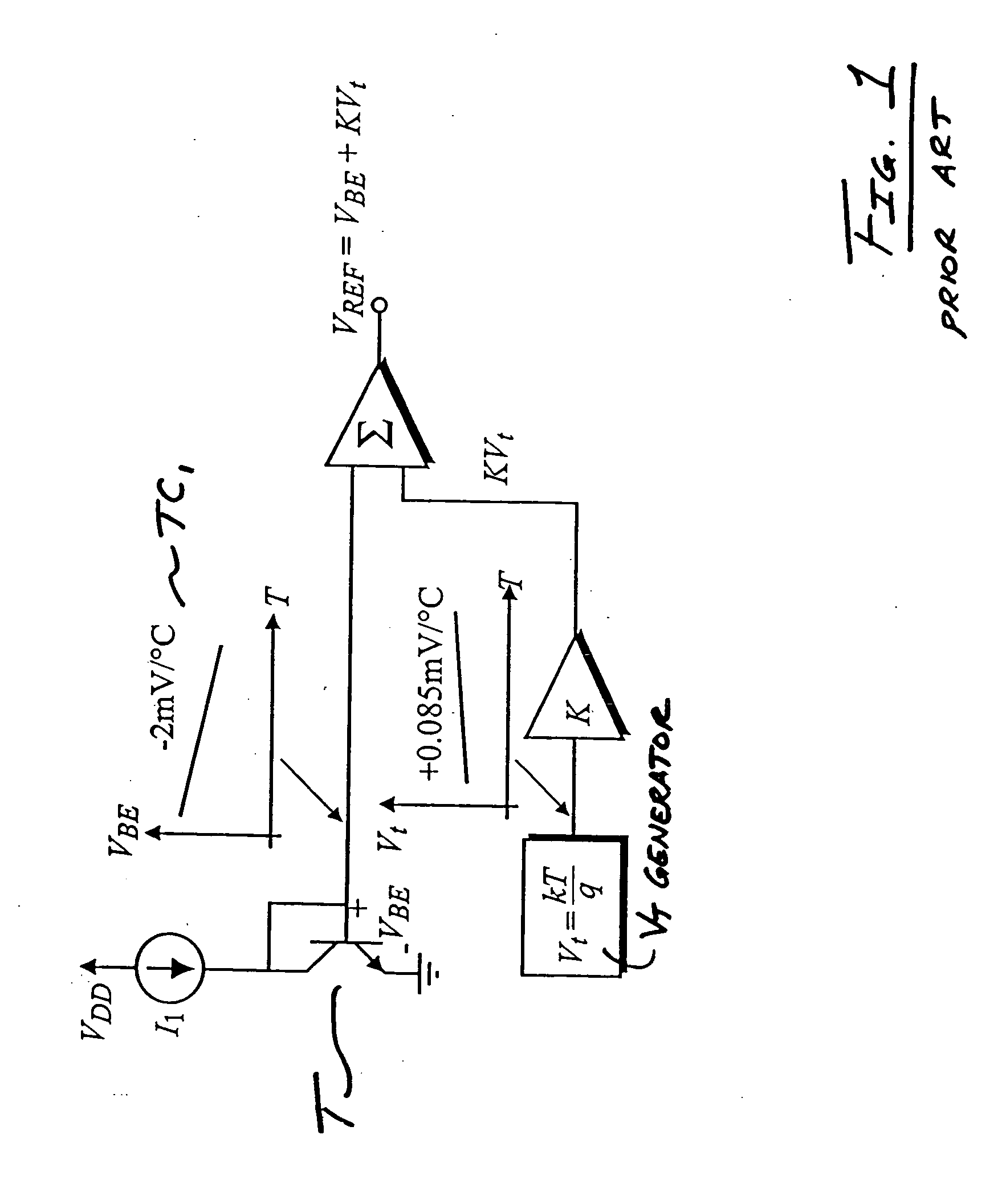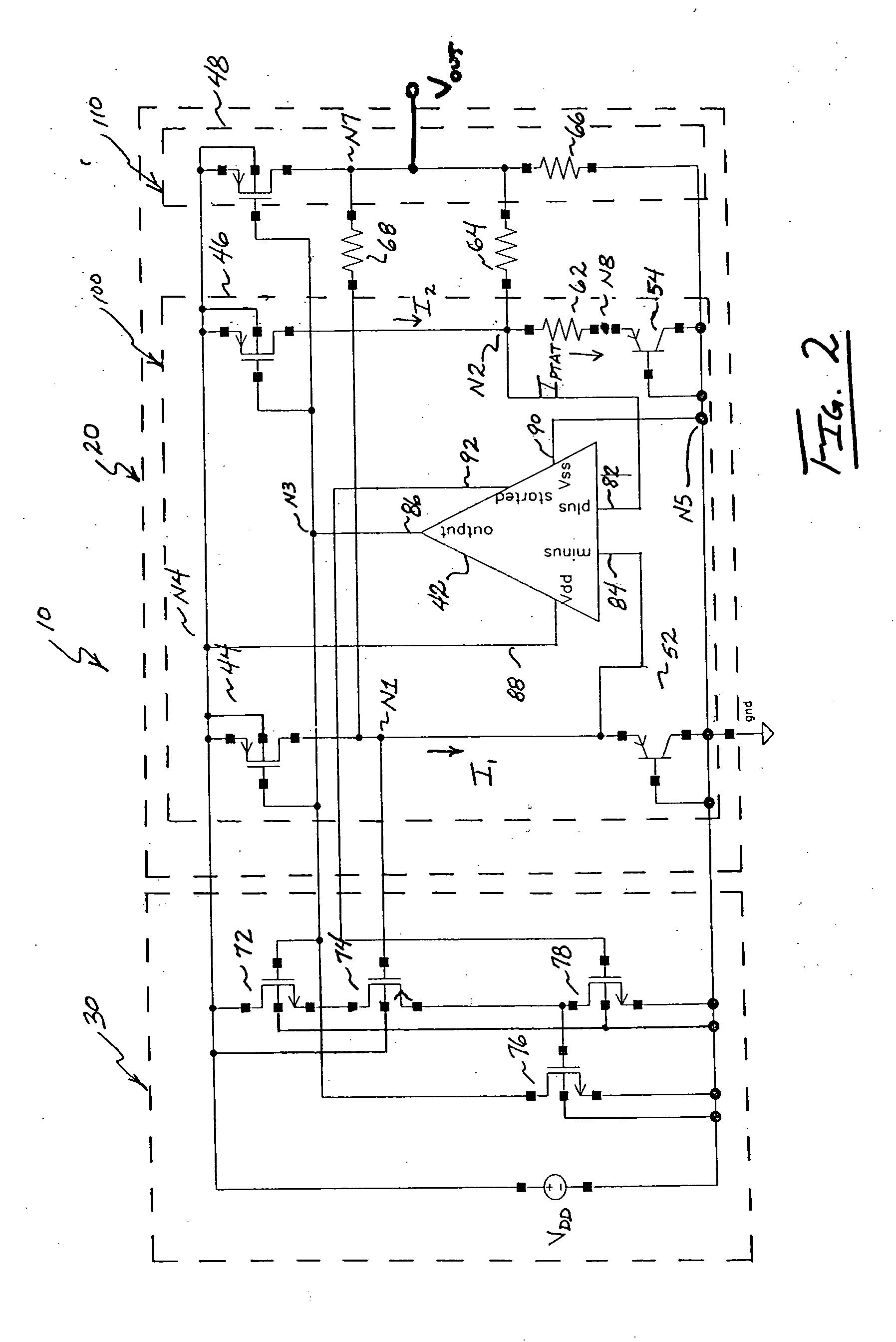Low-voltage bandgap voltage reference circuit
a low-voltage bandgap voltage and reference circuit technology, applied in the direction of electric variable regulation, process and machine control, instruments, etc., can solve the problems of increasing power consumption, difficulty in further reducing supply and reference voltages, and undetectable consumption of large amounts of real estate on integrated circuit chips
- Summary
- Abstract
- Description
- Claims
- Application Information
AI Technical Summary
Benefits of technology
Problems solved by technology
Method used
Image
Examples
Embodiment Construction
[0021] Referring now to the drawings and particularly to FIG. 1, a block diagram that illustrates the operational principles of a conventional bandgap voltage reference circuit is shown. Transistor T has a base-to-emitter voltage VBE with a typical temperature coefficient (TC) of approximately negative 2 millivolts (mV) per degree Celsius, shown in plot TC1. The VBE TC produces a VBE voltage that is CTAT. Thermal voltage Vt is generated by Vt generator and is scaled by scaling factor K. Thermal voltage Vt has a TC of approximately +0.085 mV per degree Celsius, which is scaled by scaling factor K to a TC of approximately +2 mV per degree Celsius. Scaled thermal voltage KVt is PTAT and similar in magnitude to VBE. Thus, when VBE and scaled thermal voltage KVt are summed by summing circuit Σ their TC's cancel each other and a temperature-stable reference voltage VREF of approximately 1.2 to 1.3 V results.
[0022] In contrast to the operational principles of conventional bandgap voltage ...
PUM
 Login to View More
Login to View More Abstract
Description
Claims
Application Information
 Login to View More
Login to View More - R&D
- Intellectual Property
- Life Sciences
- Materials
- Tech Scout
- Unparalleled Data Quality
- Higher Quality Content
- 60% Fewer Hallucinations
Browse by: Latest US Patents, China's latest patents, Technical Efficacy Thesaurus, Application Domain, Technology Topic, Popular Technical Reports.
© 2025 PatSnap. All rights reserved.Legal|Privacy policy|Modern Slavery Act Transparency Statement|Sitemap|About US| Contact US: help@patsnap.com



